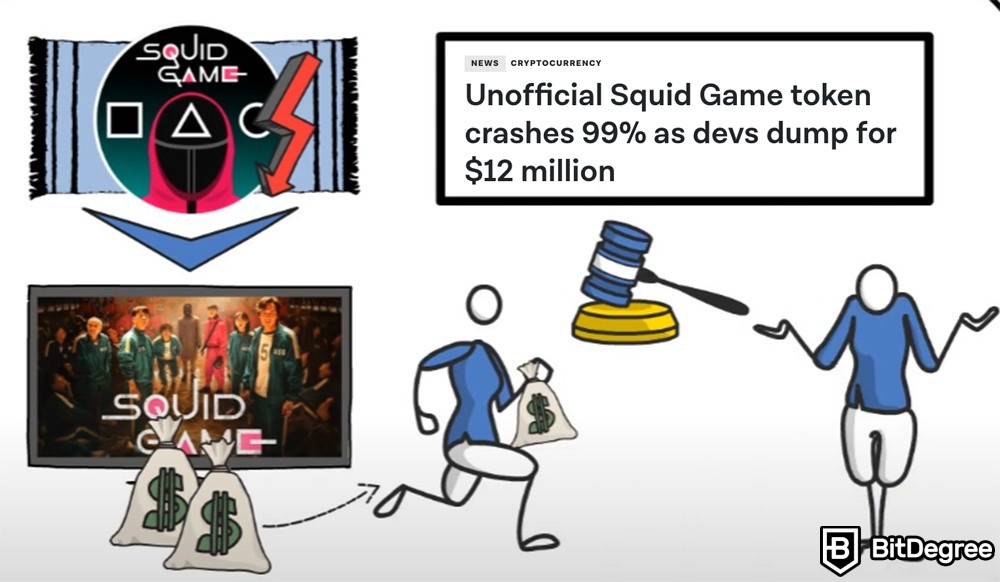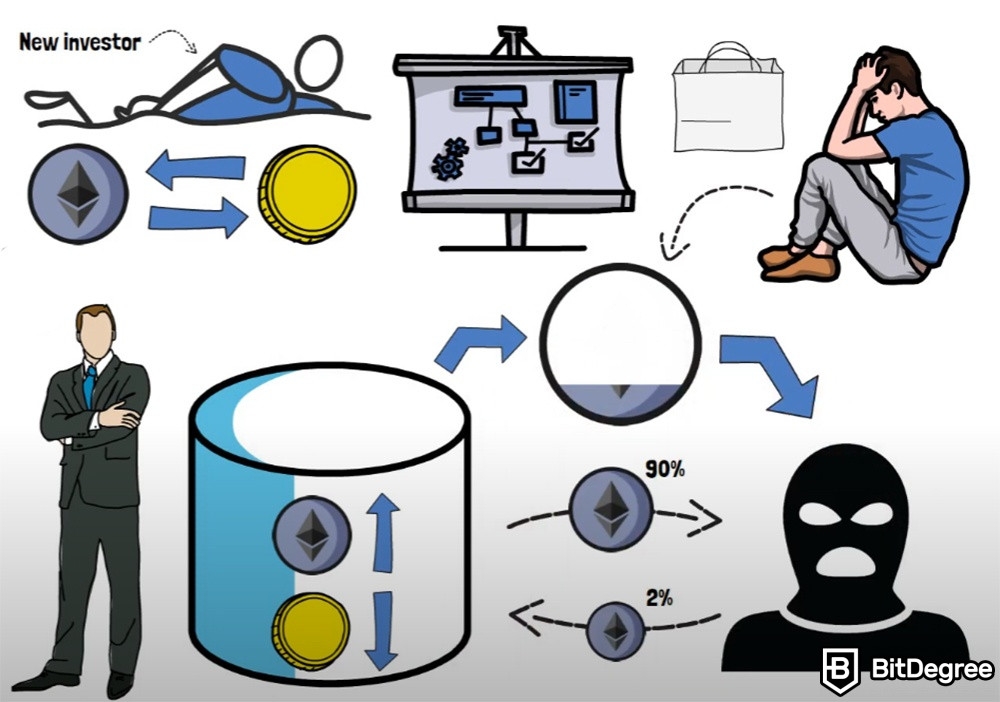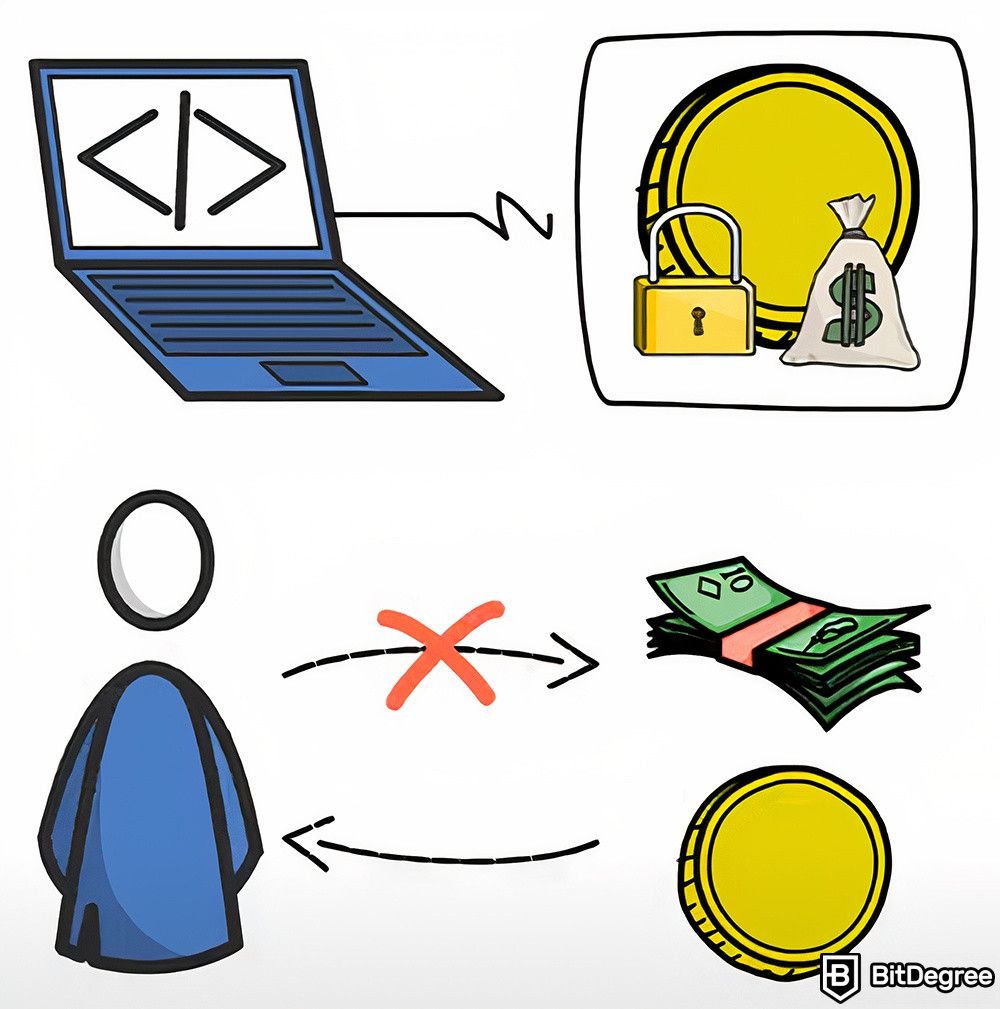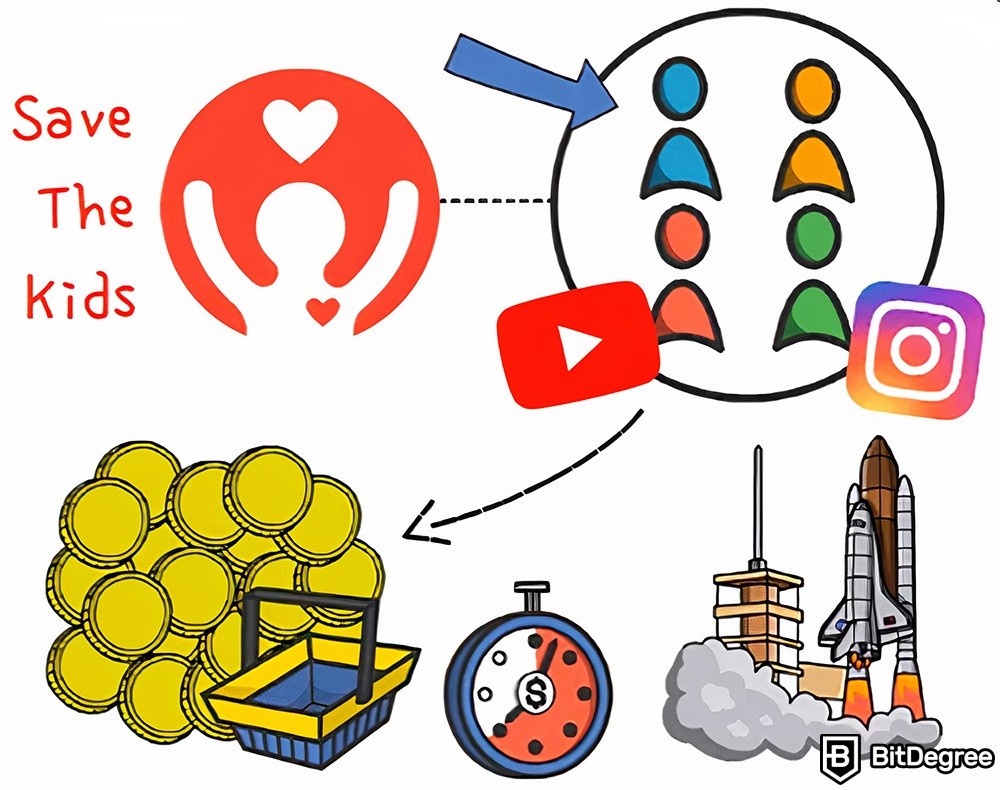7.10 What is a Rug Pull in Crypto?
Stop overpaying - start transferring money with Ogvio. Sign up, invite friends & grab Rewards now! 🎁
In this section, we’re going to cover what is a rug pull, in crypto!
Imagine that, one day, while browsing Reddit, you’ve stumbled upon a brand new crypto project - somebody made a post about a token that was just launched a few hours ago. It looks great, and there are multiple people commenting on how it will surely “go to the moon”!
Inspired by all these comments and not wanting to miss out on a potentially great investment opportunity, you decided to go all-in, and invest your savings into the token. While you went to bed seeing your investment increasing tenfold, the next morning, you wake up to see that your new tokens are now worth but a few cents. This is often what a classic rug pull looks like.
In this section, we are talking about rug pulls. I’ll explain the concept of what a rug pull is, in crypto, and give you a few examples of what classic rug pulls look like! In the end, I’ll also tell you what to look out for, when you suspect that a project might be a future rug pull.
Let’s get to it!

Video Explainer
Video Explainer: What is a Rug Pull in Crypto?
Reading is not your thing? Watch the "What is a Rug Pull in Crypto?" video explainer
What is a Rug Pull in Crypto? (Meaning + Examples)


What is a Rug Pull?
So, what is a rug pull in the world of crypto, exactly?
Well, to put it in one word, it’s theft - literal theft. However, the definition of the term is also rather simple - it’s when the developers or project owners run away with people’s investments. A typical example of a rug pull would be that which I’ve mentioned in the introductory part of this section.
Say, you’ve bought $100 worth of a token called “DefinitelyNotARugPull”. It’s a brand new project, but you’ve noticed that it has a lot of hype surrounding it, already - Reddit comments, Tweets, likes and upvotes, and so on. They even have a flashy and functional website!

All of these things can be used to lure unsuspecting investors into a trap. Once you bite the bullet and actually buy $100 worth of this new token, its price may rise for the first few hours or days, sure. This is just the period when the developers are generating hype, and trying to get as many people to buy in as possible.
After those initial few days, however, your funds could be gone in a matter of minutes - in other words, you might get rug pulled. There are actually a few ways of how this would look like, so let’s explore the most popular methods of rug pulling, shall we?
Developers Selling their Tokens
Undoubtedly the most common method of how rug pulls are executed is by developers or companies behind the project dumping their own tokens into the market, thus crashing the price of the token. Allow me to elaborate on this.
When developers create a project, they also set things such as total token supply, and initial token allocation. Meaning, they can give themselves any number of tokens that they’d like - in many cases, developers do that. Think of it as shares in a company.
At first, the project is worthless, since it has just started - thus, the tokens are worthless, as well. However, as hype starts building up, and the project gets more and more recognition, the price of the token increases, as well.

At some point, the project owners might decide to do a rug pull - simply dump their tokens into the market, causing an immediate and huge price crash. Suddenly, there are thousands or even hundreds of thousands more tokens on the supply side of things, and no demand - naturally, the token loses price!
It’s worth mentioning that some rug pulls of this kind happen gradually, instead of a sudden dump - developers could choose to offload their tokens slowly, with the hopes that no one will notice. However, in the vast majority of cases, the rug pull will happen in a matter of minutes.
In this situation, the developers will run away with a newly-acquired stack of ETH or BNB coins that they’ve traded their project token for, while investors will be left “holding the bag” of now-worthless tokens. As I’ve said - a classic example of a rug pull.
If you want a real-world example of what this type of a rug pull looks like, you needn’t look further than into the alleged rug pull of the Squid Game token. This event even made the headlines of mainstream news sources! Essentially, the scenario of how it went down is very simple - some people created a token based on the popular TV show, and when investors started flocking in, the team behind the project allegedly rug pulled it, and ran away with the funds.

While no law enforcement agency has “confirmed” this to be a rug pull, most of the crypto community agrees that the Squid Game token was, indeed, rug pulled.
Draining Liquidity
The second super-popular method of how rug pulls are performed is by draining the liquidity from the project. This might require some explanation.
Imagine that you’ve come up with an awesome idea for a brand new cryptocurrency project. You’ve set everything up, and are ready to launch your project. However, since the token of your project is completely new, and thus, worthless, you will need to supply the project with liquidity, in order to allow other people to trade your tokens at the very beginning.
So, what this would look like is something like this - you supply the market with your new tokens, in addition to some valuable crypto coins, such as Ethereum. This is called a liquidity pool - imagine it as a jar where you put two different types of candy into it. If you want to get a better understanding of liquidity pools, though, I urge you to go and read the section dedicated to liquidity pools, and then come back to this one.
So, the pool allows new investors to come in, and trade their valuable tokens for your newly-created project tokens. With time, as more and more investors join in on the project, the pool will start receiving a lot more of the valuable crypto tokens, while having less and less of your project token.

What a malicious developer could do here is simply take out all of the liquidity from the pool - in other words, just how they initially put in their valuable coins or tokens into the project (for example, Ethereum), they could now take them out, in the same way. Now, however, they would be taking out much more than they’ve put in, thanks to all of the new investors that have contributed their ETH to the pool.
In this situation, investors are, once again, left “holding the bag” - they can’t sell their worthless tokens, since all of the liquidity (or, Ethereum) has been drained out of the pool, by the malicious developers or project owners.
Malicious Code
Now, the third type of rug pulls has to do with malicious project code. Admittedly, it’s one of the rarer types of rug pulls - this doesn’t mean it doesn’t still happen, though! Since it’s a bit rare, it might even be overlooked. That is because not that many people know that this is even possible.
Developers of a project could code some malicious mechanics into their smart contracts. For example, they could write code that prevents investors from selling their tokens - meaning, you could only BUY the token, but couldn’t SELL it.

This would, obviously, make the price of the token go up, pretty fast, since no one but the developer is able to sell it. If they time it right, the people behind the project could dump their share of the tokens into the market before the word goes out, and the rug pull becomes evident.
Unless you know where to look at, rug pulls like these can be easy to overlook! This is why it’s important to really dig deep into the project, read all of the investor feedback, and check for any potential loopholes.
How to Spot a Potential Rug Pull?
So, speaking of loopholes, now that you know what rug pulls are, and how the traditional rug pulls are executed, we can also take a look at some signs that you could spot within a project, if you suspect it to be a future rug pull in development!
The very first and most-obvious thing to look out for is token distribution - in other words, if there are any number of wallets that hold a huge number of all of the available project tokens.
How can you check this? Well, there are special websites, such as Etherscan and BscScan - these are blockchain explorers that allow you to enter the smart contract address for any Ethereum or Binance Smart Chain project out there, and check the token allocation. If you see that 10 or 20 wallets hold more than 50% of all the available tokens, chances are that there’s something fishy going on, and you should stay away from the project.
The second thing to look out for has to do with liquidity. Remember when I told you about the liquidity draining method of a rug pull? Well, one way how you can see whether a project has the potential to be rug pulled this way is by checking if the liquidity for that project is locked or not.
Locked liquidity means that there’s no chance for the developers to access it, and thus, suddenly rug pull the project. Of course, you should also check for how long that liquidity is locked - if it’s just a couple of months, well, that’s not going to change much.
The third sign that a project could be a potential rug pull is actually made up of two parts - anonymous developers, and a lack of an independent audit.
If the developers for a project are anonymous, that should raise some red flags - if they DO end up rug pulling their project, you won’t really have any leads on who to seek out for your damages. If, however, the developers or project owners are well-known, and their identities are public, there’s a much smaller chance that a rug pull will happen.
On that same note, if a project is independently audited, this also adds to its legitimacy claims. An independent audit is when the smart contract is checked by professionals who are actively trying to find potential loopholes and malicious projects. If there’s a lack of an audit, though, or if it has been audited by some shady, non-reliable auditor, then this should also raise some red flags.
Last but not least, a huge thing that you should be aware of is how the developers - or the team behind the project, in general, - interact with their investors. Do they have an official website, a Discord, and a Twitter account? How is their communication - do they talk with their investors? Does it look like they’re trying to hide something, or are there questions that keep getting dodged all the time?

In general, you should really “get a feel” for the community and team behind a project, before you decide if it’s worth investing in or not. If there’s something not quite right, or you feel that there’s shadiness surrounding the project, it could be a rug pull, just waiting to happen.
A great example of how intricate and difficult-to-spot rug pulls can be is a token called SaveTheKids. It was created and launched by a few different YouTube and social media influencers, most of who dumped their tokens into the market a few hours after the launch, thus crashing the token’s price.

Again, this was an ALLEGED rug pull - for legalities’ sake, this is just the conclusion that the community behind the project has come to, and no financial authority has really confirmed it. Nevertheless, it just goes to show that even if the project has an awesome community and some very well-known names behind it, you can still never be 100% certain that there isn’t something fishy going on, in the background.
With that, though, we've come to an end of this section. I hope that now you will be more aware of the signs, that a rug pull might take place.










